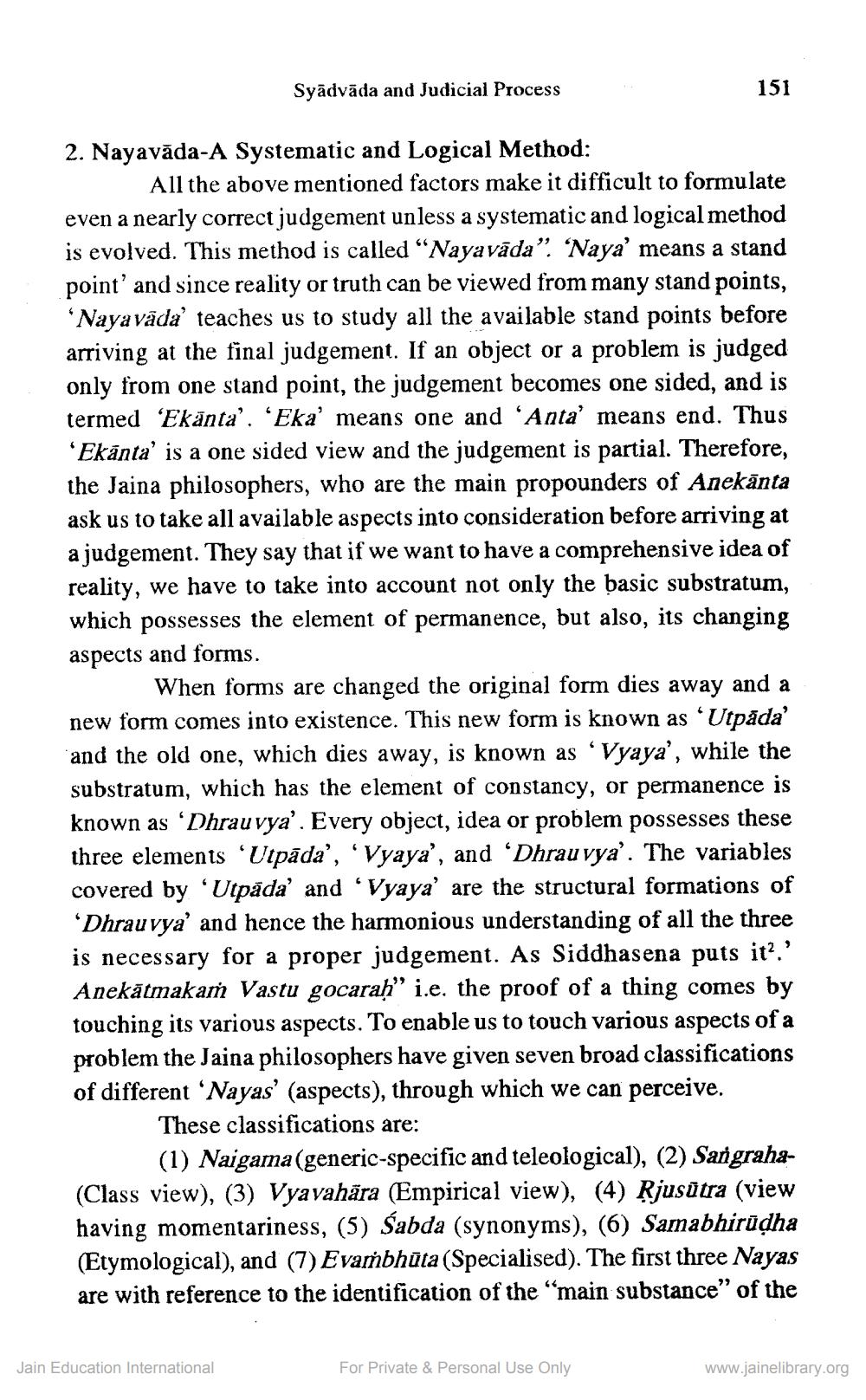________________
Syādväda and Judicial Process
151
2. Nayavāda-A Systematic and Logical Method:
All the above mentioned factors make it difficult to formulate even a nearly correct judgement unless a systematic and logical method is evolved. This method is called “Nayavāda”. “Naya' means a stand point' and since reality or truth can be viewed from many stand points, 'Nayavāda' teaches us to study all the available stand points before arriving at the final judgement. If an object or a problem is judged only from one stand point, the judgement becomes one sided, and is termed 'Ekānta'. 'Eka' means one and 'Anta' means end. Thus 'Ekänta' is a one sided view and the judgement is partial. Therefore, the Jaina philosophers, who are the main propounders of Anekānta ask us to take all available aspects into consideration before arriving at a judgement. They say that if we want to have a comprehensive idea of reality, we have to take into account not only the basic substratum, which possesses the element of permanence, but also, its changing aspects and forms.
When forms are changed the original form dies away and a new form comes into existence. This new form is known as “Utpada' and the old one, which dies away, is known as 'Vyaya', while the substratum, which has the element of constancy, or permanence is known as 'Dhrau vya'. Every object, idea or problem possesses these three elements Utpada', 'Vyaya', and 'Dhrau vya'. The variables covered by 'Utpäda' and 'Vyaya' are the structural formations of 'Dhrau vya' and hence the harmonious understanding of all the three is necessary for a proper judgement. As Siddhasena puts it?.' Anekātmakaṁ Vastu gocaraḥ" i.e. the proof of a thing comes by touching its various aspects. To enable us to touch various aspects of a problem the Jaina philosophers have given seven broad classifications of different 'Nayas' (aspects), through which we can perceive.
These classifications are:
(1) Naigama(generic-specific and teleological), (2) Sangraha(Class view), (3) Vyavahāra (Empirical view), (4) Ķjusūtra (view having momentariness, (5) Sabda (synonyms), (6) Samabhirūờha (Etymological), and (7) Evambhūta (Specialised). The first three Nayas are with reference to the identification of the main substance” of the
Jain Education International
For Private & Personal Use Only
www.jainelibrary.org




